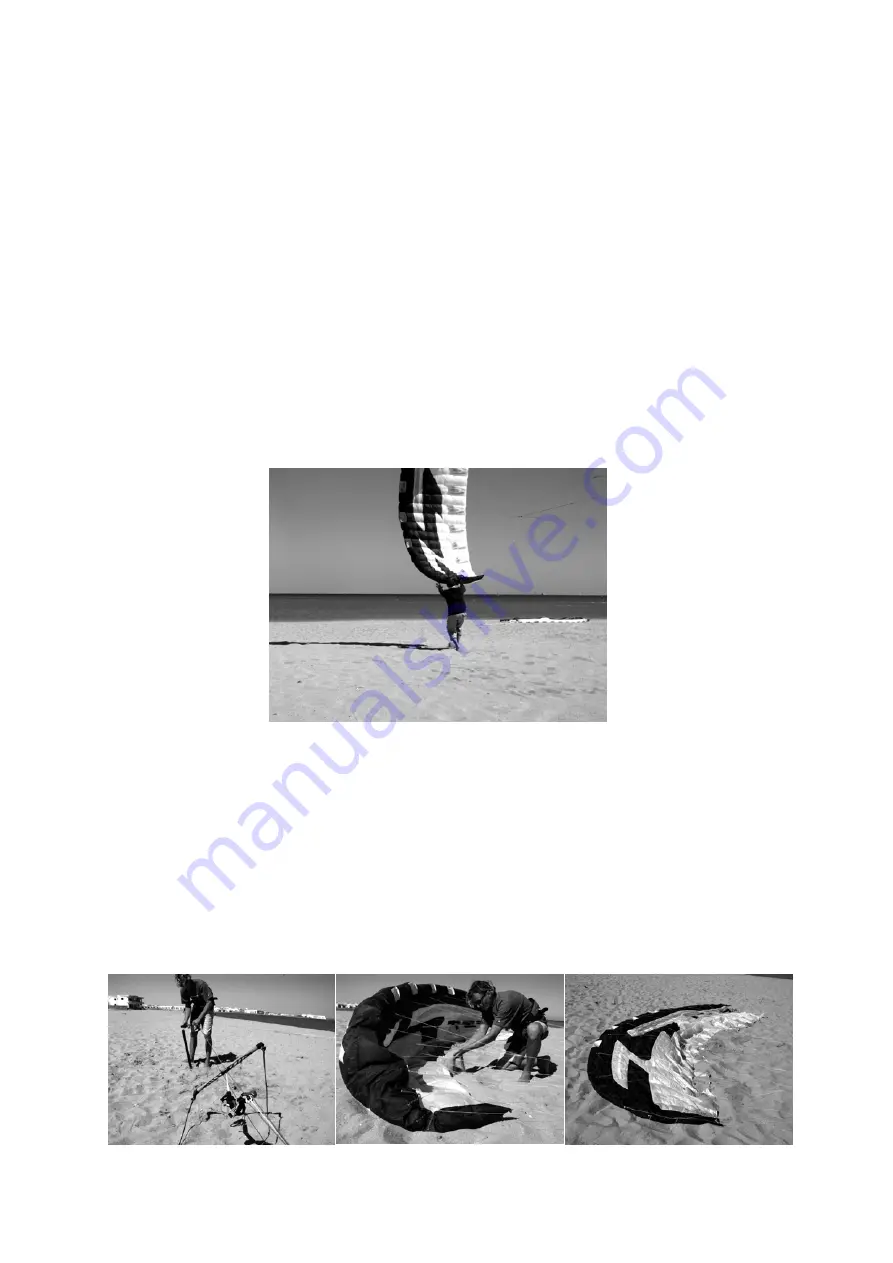
28
11. Landing
11.1. At the edge of the wind window
Basically every kite is caught by a helper at the edge of the wind window. Especially,
if there are strong winds and very little room downwind.
Fly the kite at the edge of the wind window slightly above the ground and let a
competent helper catch it. The helper will approach the kite from upwind, grab the
lower wingtip and pull it towards him/her. You should now walk toward him to relieve
the tension in the lines and still leave some tension in the upper line to assist the
helper in letting the wingtip blow out downwind. The helper lays the kite on its upper
sail and weighs down the wingtip (e.g. with sand). That way, the kite is in an optimal
position to be relaunched without a helper.
The secured kite should not be twirled around by gusty winds, because the lines
could get tangled up.
Tip:
During gusty winds, you shouldn’t wait too long to land the kite. Maybe you will
be able to fly the kite away from the edge of the wind window, by powering up or by
flying the kite up and down. This increases the collapse resistance stability.
11.2. In the power-zone
A FS kite can be landed single handed and safely. Check that the landing spot is free
of people and obstacles. Then unhook and let go of the bar (in an emergency pull the
Quick Release on the depowerloop). Once the kite has landed, it can be secured by
a helper or you can let it blow against a suitable object where the wind should pin it
down. Otherwise secure the SAFETY-LEASH onto a solid pole, rock etc. The kite
should then be secured immediately; to make sure it doesn’t restart.
If there are no suitable objects near you it is possible to tie the safety to a board
buried in the sand (only suitable for light winds). Then quickly run up to the kite
outside of the lines and secure it additionally.
Содержание EXTACY
Страница 1: ...1...
Страница 38: ...38 Line setup PSYCHO 21 m Line setup SPEED 10 m...
Страница 44: ...44...
















































